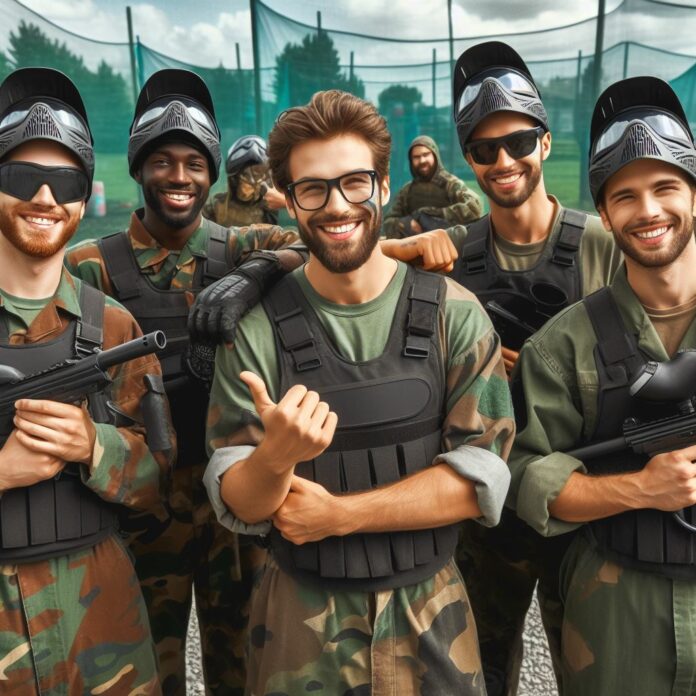Starting a paintball team can be an exciting and rewarding endeavor. Whether you are a seasoned player or new to the sport, forming a paintball team allows you to compete, build camaraderie, and develop essential skills.
Joining a paintball team offers numerous benefits, such as learning from experienced players, fostering teamwork and communication skills, and gaining access to competitive opportunities.
Why Start a Paintball Team?
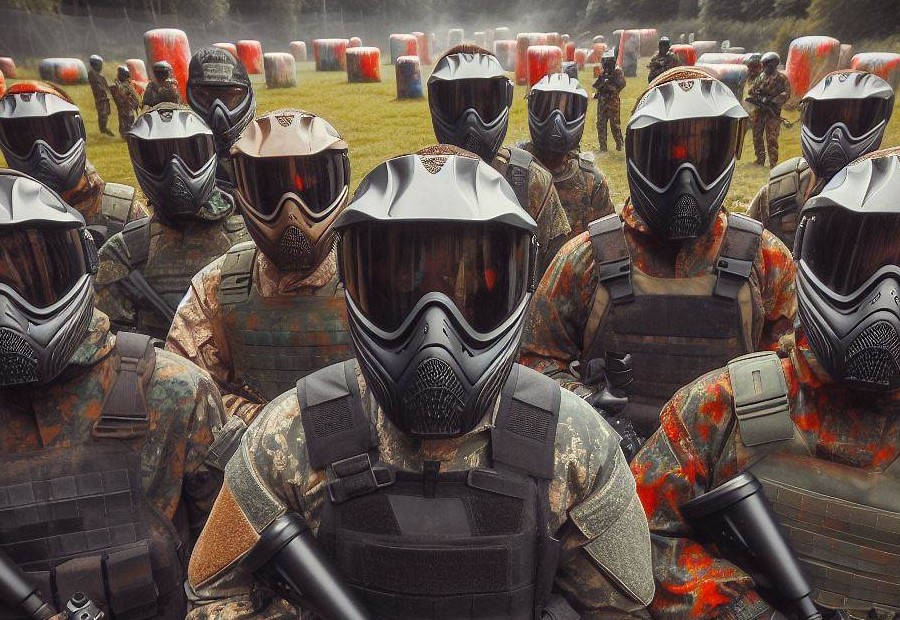
Benefits of Joining a Paintball Team
Joining a paintball team offers a multitude of benefits that can greatly enhance your paintball experience.
- Enhanced teamwork: By joining a paintball team, you have the opportunity to work closely with other players and develop strong teamwork skills. Through coordination, communication, and strategic planning, you can achieve victory together.
- Improved skills: Being part of a team helps you cultivate your paintball skills. Regular practice sessions and training exercises with teammates allow you to learn new techniques, enhance your accuracy, and hone your tactical abilities.
- Increased competitiveness: Joining a paintball team enables you to participate in competitive tournaments and events. This provides an opportunity to measure your skills against other skilled players, challenging yourself and pushing your limits.
- Expanded social network: Joining a paintball team introduces you to a group of like-minded individuals who share the same passion for the sport. It provides an avenue to make new friends, bond over shared experiences, and create lasting memories.
- Fun and camaraderie: Being part of a team creates a sense of belonging and camaraderie. Whether strategizing on the field or celebrating victories, the team spirit fosters a fun and enjoyable atmosphere.
- Personal growth: Joining a paintball team allows for personal growth and self-improvement. It boosts confidence, decision-making abilities, and mental acuity. It also provides an opportunity to develop leadership skills if you take on captain or leadership roles within the team.
Steps to Start a Paintball Team
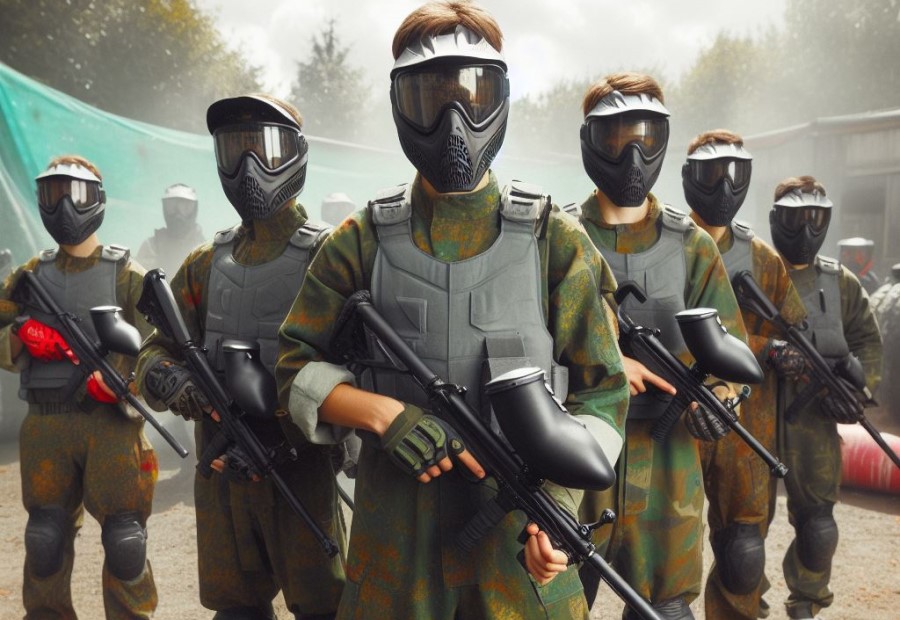
Define Your Vision and Goals
To define your vision and goals for starting a paintball team, follow these steps:
- Identify the purpose of your team. Determine whether you want to compete professionally, participate in local tournaments, or simply play for fun.
- Set specific and measurable goals for your team. For example, you might aim to win a certain number of tournaments or improve your team’s ranking in the paintball community.
- Consider the resources and time commitment required to achieve your goals. Assess the availability of team members, equipment, and training opportunities.
- Develop a team philosophy. Define the values and principles that your team will uphold, such as sportsmanship, teamwork, and dedication.
- Create a long-term vision for your team. Envision where you want your team to be in the next few years and what accomplishments you hope to achieve.
- Communicate your vision and goals to your team members. Ensure that everyone is aligned and committed to working towards the same objectives.
- Regularly evaluate and update your vision and goals. As your team evolves and grows, re-assess your objectives and make necessary adjustments.
Gather a Group of Players
When starting a paintball team, gathering a group of players is a crucial step to ensure a strong foundation. Here’s a list of steps to gather a group of players:
- Spread the word: Let others know about your plan to gather a group of players for a paintball team. Talk to friends, family members, colleagues, and anyone else who might be interested in joining.
- Reach out to local paintball communities: Contact local paintball fields or clubs and inquire about player networks or forums where you can find potential team members.
- Attend paintball events: Visit local paintball tournaments, open-play sessions, or practice events. This will allow you to meet players who are passionate about the sport and interested in joining a team.
- Join online paintball communities: Utilize social media platforms or online forums dedicated to paintball to connect with players in your area. Post about your team and ask interested individuals to contact you.
- Hold tryouts: Organize tryout sessions where interested players can showcase their skills and see if they fit well with the team’s vision and goals. Evaluate their abilities, teamwork, and communication skills during these sessions.
Determine Roles and Responsibilities
When starting a paintball team, it is crucial to determine roles and responsibilities to ensure smooth coordination and effective teamwork. Here is a step-by-step guide to help you determine roles and responsibilities:
- Identify the key positions needed in the team, such as the captain, vice-captain, strategist, and communications coordinator, to determine roles and responsibilities.
- Assign specific responsibilities to each role based on their strengths and expertise. For instance, the captain could be responsible for leading the team during games and making strategic decisions, determining their role.
- Establish clear communication channels within the team to ensure everyone is informed and can collaborate effectively. This could involve regular team meetings, group chats, or other communication tools, aiding in determining roles and responsibilities.
- Encourage open communication and support among team members, allowing everyone to feel comfortable expressing their ideas and concerns while determining roles and responsibilities.
- Set expectations for each team member, including attendance at practices and tournaments, adherence to team rules, and commitment to training and improvement, defining their roles and responsibilities.
- Create a system for evaluating and providing constructive feedback to help each team member grow and contribute to the team’s success, which is important for determining roles and responsibilities.
By determining roles and responsibilities early on, your paintball team will be better organized, focused, and efficient. This will ultimately enhance your team’s performance and increase your chances of success on the field.
Choose a Team Name
When it comes to choosing a team name for your paintball team, it is crucial to consider several factors:
- Relevance: It is important to select a name that is relevant to paintball and truly reflects the spirit of the sport.
- Meaningful: Opt for a name that holds a deep meaning for your team and effectively represents your values and goals.
- Memorable: Choose a name that is catchy and easy to remember, ensuring it sticks in people’s minds.
- Unique: Stand out from other paintball teams by selecting a distinctive and original name.
- Positive connotation: Make sure the chosen name has a positive connotation and promotes a sense of unity and camaraderie.
Establish Team Communication
Establishing effective team communication is crucial for the success of a paintball team. Here are some keyways to ensure proper communication among team members:
- Designate a team leader: Appoint a leader to coordinate and facilitate communication within the team.
- Establish regular team meetings: Schedule frequent meetings to discuss strategies, tactics, and address any concerns or issues.
- Implement a communication platform: Utilize a communication platform like a group chat or online forum to share information, updates, and coordinate logistics.
- Encourage active listening: Emphasize the importance of active listening during team discussions and ensure every member has a chance to express their thoughts and ideas.
- Set clear communication channels: Clearly define channels for sharing important information, whether through face-to-face conversations, phone calls, or digital communication.
- Establish emergency procedures: Create a plan for urgent situations and ensure all team members are aware of the procedure and can communicate effectively during those times.
- Provide feedback: Regularly provide constructive feedback to team members, highlighting areas of improvement and acknowledging their strengths to foster a supportive communication environment.
Effective team communication enhances coordination, boosts morale, and promotes a cohesive and united paintball team.
Create a Team Identity
To successfully create a team identity for your paintball team, it is important to follow these steps:
- Define your team’s values and principles: Establish the core beliefs and values that will guide your team’s behavior and decision-making process.
- Create a team logo and colors: Craft a distinctive logo that represents your team’s identity and select colors that reflect your team’s personality.
- Choose a team motto or slogan: Develop a captivating phrase or slogan that succinctly captures your team’s mission or attitude.
- Uniforms and gear: Carefully choose uniforms and gear that align with your team’s identity. Ensure consistency in colors and design for a cohesive appearance.
- Team rituals and traditions: Establish rituals or traditions that promote team unity and foster a sense of belonging among team members.
- Team name: Opt for a name that embodies your team’s spirit and resonates with your members on a deeper level.
- Social media presence: Create social media accounts to showcase your team’s accomplishments and connect with the paintball community.
By diligently following these steps, you will be able to create a robust team identity that will strengthen camaraderie among team members and make your paintball team truly stand out.
Equipment and Gear
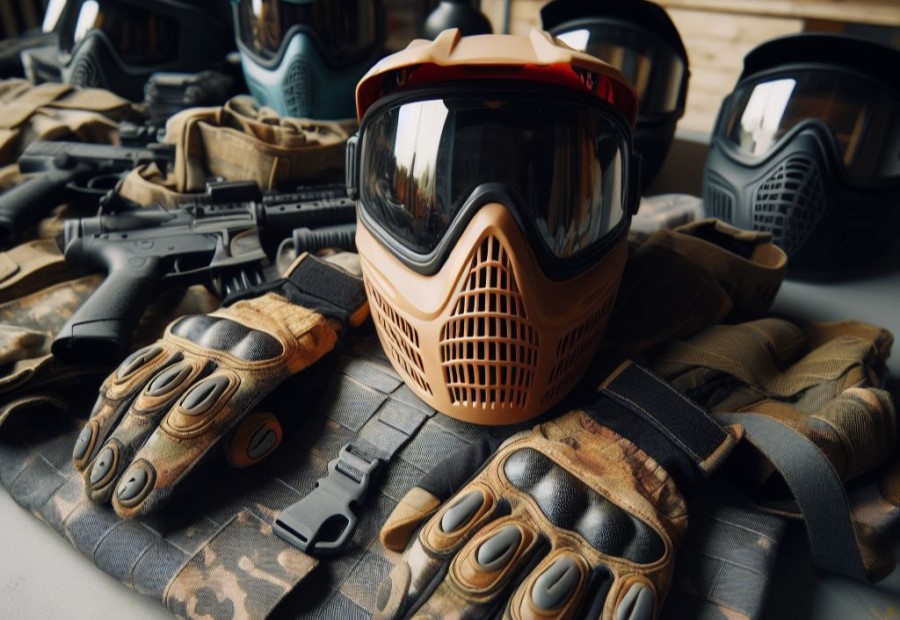
Paintball Guns and Markers
When it comes to paintball guns and markers, there are several factors to consider to ensure the best performance and experience on the field:
- Type of gun: There are different types of paintball guns available, such as pump-action, mechanical, and electronic. Each type has its own advantages and disadvantages, so choose one that suits your playing style and budget.
- Firing mechanism: Paintball markers can have different firing mechanisms, including blowback, spool valve, and electronic solenoid. The firing mechanism affects the accuracy, rate of fire, and consistency of the shots.
- Barrel length: The length of the barrel can affect accuracy and range. Shorter barrels are more maneuverable, while longer barrels offer improved accuracy. Consider the playing style and field conditions when choosing the barrel length.
- Maintenance: Some paintball guns require more maintenance than others. Consider how easy it is to clean, lubricate, and perform regular maintenance on the chosen marker.
- Upgrades and customization: Look for guns that offer compatibility with a wide range of upgrades and accessories. This allows you to enhance your marker’s performance and customize it to your preferences over time.
Protective Gear
When participating in paintball, it is crucial to prioritize the safety of the players. To ensure maximum protection, the use of protective gear is essential.
- Masks: A high-quality paintball mask with full-face protection is necessary to shield the eyes, ears, and face from potential injuries.
- Gloves: Wearing durable gloves with padding and reinforced knuckles will safeguard the hands and fingers from bruises or cuts.
- Chest Protectors: A chest protector provides extra padding to protect the torso from direct hits and reduce the impact of paintball shots.
- Knee and Elbow Pads: These protective pads offer cushioning and support for the joints, minimizing the risk of injuries during intense gameplay.
- Neck Protectors: Neck protectors shield the vulnerable neck area from paintball impacts, providing additional safety.
- Appropriate Clothing: Wearing long-sleeved shirts, pants, and sturdy footwear can protect against scrapes, scratches, and abrasions while also providing some added padding.
It is crucial to ensure that all protective gear is in good condition, fits properly, and is worn correctly. Regularly inspecting the gear, such as checking for any cracks or tears, is essential for maintaining its effectiveness.
Paintballs and Ammunition
When it comes to paintball, having the right paintballs and ammunition is crucial for a successful game. You need to consider a few factors when choosing the right paintballs and ammunition for your team:
| Quality | Ensure that you choose high-quality paintballs and ammunition that are reliable and consistent. Low-quality paintballs and ammunition can lead to breaks inside your marker, affecting its performance. |
| Caliber | Choose paintballs and ammunition that match the caliber of your paintball gun, whether it’s .68 or .50. Using the correct caliber ensures accurate shots and prevents jams. |
| Shell Thickness | Consider the shell thickness of the paintballs and ammunition. Thicker shells are more durable and less likely to break in the barrel or when hitting obstacles, providing a better overall experience. |
| Filling | Decide on the type of paintball filling and ammunition based on your preferences and game requirements. There are options like oil-based or water-based fillings, each offering different advantages. |
| Quantity | Take into account the number of paintballs and ammunition you need for a game. Consider the length of the game, the number of players, and their shooting style to ensure you have enough ammunition. |
Choosing the right paintballs and ammunition for your paintball team can greatly impact your performance on the field.
It’s important to select high-quality paintballs and ammunition that match your paintball gun’s caliber, have an appropriate shell thickness, and fulfill your filling preferences.
Additionally, make sure to have enough ammunition for the game to avoid running out during crucial moments. With the right paintballs and ammunition, your team can enhance their gameplay and increase their chances of victory.
In the history of paintball, the development of paintball ammunition has undergone significant advancements.
From the early days when paintballs were used for forestry and cattle marking, to the modern era of precision-made paintballs and ammunition designed specifically for the sport of paintball, the evolution of paintball ammunition has revolutionized the game.
Today, players have a wide range of high-quality paintballs and ammunition options available to enhance their gameplay experience and ensure optimal performance on the field.
Training and Practice
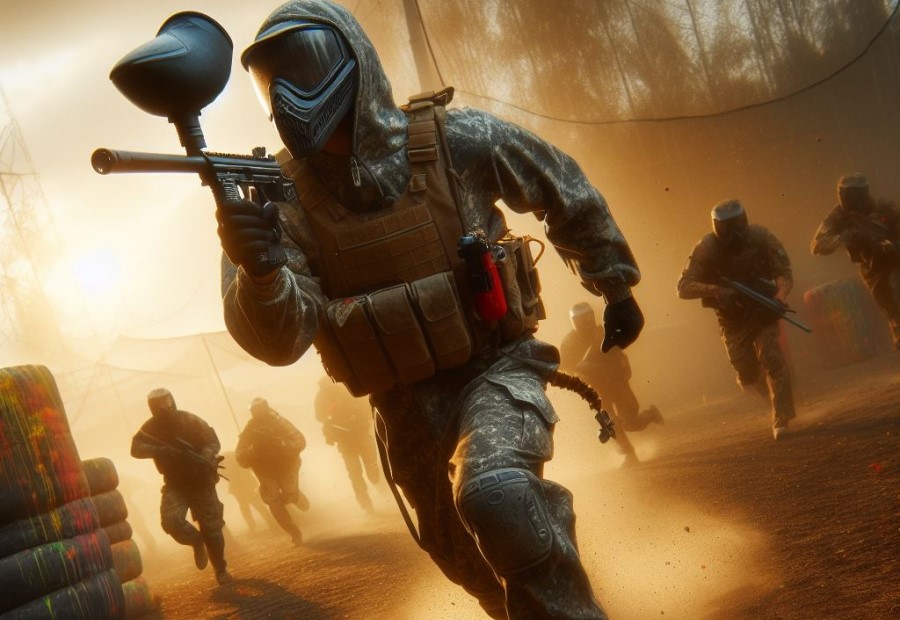
Develop a Training Plan
To develop a training plan for your paintball team, follow these steps:
- Assess the skill level of your players. Evaluate their strengths and weaknesses to determine what areas they need to focus on during training.
- Establish clear training objectives. Define what you want your team to achieve through training, whether it’s improving teamwork, enhancing individual skills, or refining game strategies.
- Design a structured training schedule. Determine how often and for how long your team will practice. Consistency is key to progress.
- Create a variety of training drills and exercises. Incorporate exercises that focus on different aspects of the game, such as shooting accuracy, communication, and tactical maneuvers.
- Utilize scrimmage matches. Organize friendly matches among your team members or with other teams to apply what you’ve been practicing and improve game sense.
- Provide constructive feedback. During practice sessions, offer feedback to each player individually, focusing on areas of improvement and highlighting their strengths.
- Encourage teamwork and communication. Emphasize the importance of effective communication, coordination, and collaboration during gameplay.
- Monitor progress and adjust the training plan accordingly. Regularly assess your team’s performance and evaluate the effectiveness of your training methods. Make any necessary adjustments or additions to the plan.
Practice Game Strategies
When it comes to practice game strategies for your paintball team, it’s crucial to focus on teamwork, communication, and strategic planning. Here are some essential practice game strategies to consider:
- Develop a game plan: Before each practice session, engage in discussions and create a game plan that clearly outlines your team’s objectives and tactics for winning the game.
- Practice different scenarios: Simulate various game scenarios during practice sessions to adequately prepare your team for any situation they may encounter in actual games. This will enhance their decision-making and adaptability on the field.
- Work on communication: Effective communication is vital in paintball. Practice and refine clear and concise communication techniques, such as utilizing specific call signs and hand signals for different actions or strategies.
- Coordinate movement and positioning: Emphasize teamwork and synchronize movements with your teammates. This will enable you to collaboratively control the field and strategically position yourselves for offensive and defensive plays.
- Study opponent strategies: Analyze and learn from the successful strategies implemented by other teams. This will enable you to anticipate their moves and develop counterstrategies, providing you with a competitive advantage.
By consistently implementing these practice game strategies, your paintball team can significantly enhance their performance, improve coordination, and increase their chances of success on the field.
Physical Conditioning
Physical conditioning is an essential aspect of preparing for paintball as a team sport. To perform at your best on the field, it is important to maintain a high level of fitness and endurance. Here are some key factors to consider:
- Cardiovascular fitness: Engage in regular aerobic exercises such as running, cycling, or swimming to improve your stamina and endurance levels.
- Strength training: Incorporate strength training exercises, including weightlifting and bodyweight exercises, to enhance your overall strength and power on the field.
- Agility and flexibility: Work on agility drills, such as ladder drills and cone drills, to improve your speed, quickness, and maneuverability. Flexibility exercises like stretching and yoga can also help prevent injuries.
- Balance and coordination: Practice drills that focus on balance and coordination, such as single-leg exercises and hand-eye coordination exercises, to improve your overall body control and accuracy.
- Interval training: Incorporate high-intensity interval training (HIIT) sessions into your workouts to simulate the fast-paced nature of paintball games and improve your anaerobic capacity.
To maximize your physical conditioning for paintball, it is recommended to train regularly, gradually increasing the intensity and duration of your workouts. Additionally, ensure proper nutrition and hydration to support your training and recovery.
Remember, physical conditioning is just one aspect of preparing for paintball. Don’t forget to also focus on teamwork, strategy development, and practicing game scenarios to excel as a paintball team.
Competing as a Paintball Team
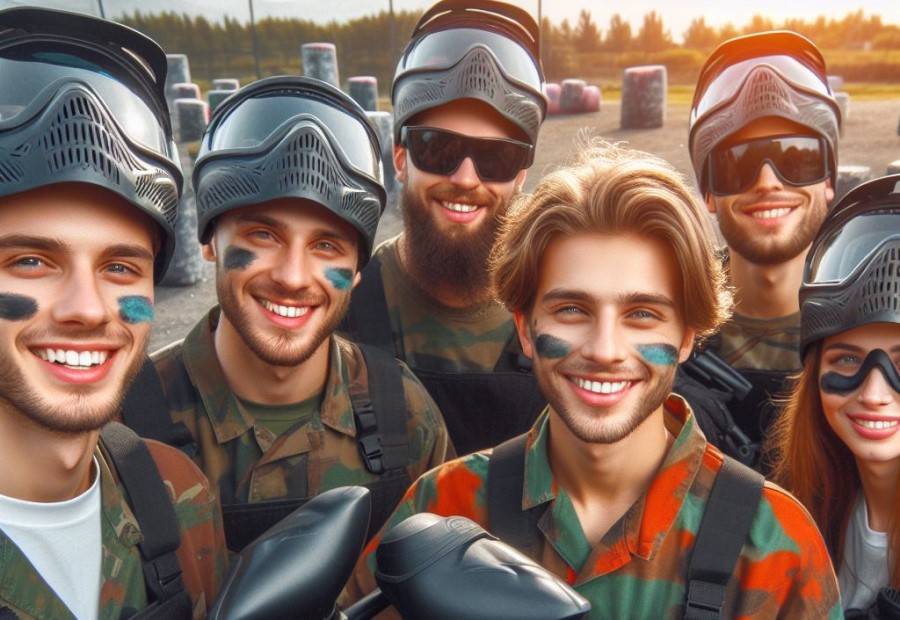
Competing as a paintball team takes more than just showing up at a tournament. It’s about joining local tournaments, participating in regional or national events, and collaborating with other teams for friendly matches.
It’s about building team spirit and camaraderie through team-building activities, encouraging open communication and support, and celebrating achievements and milestones.
Join Local Tournaments
Joining local tournaments is a great opportunity for paintball teams to showcase their skills and compete with other teams. Here are the steps to get started:
- Research local tournaments: Find out about paintball tournaments happening in your area. Check online platforms, social media groups, and local paintball fields for information on upcoming events.
- Register your team: Once you’ve found a tournament that suits your team, register your team for the event. Follow the registration process provided by the tournament organizers.
- Prepare your gear: Make sure all team members have the necessary paintball guns, protective gear, and ammunition for the tournament. Check and maintain your equipment to ensure it’s in working order.
- Develop game strategies: Work together as a team to develop effective game strategies. Practice different scenarios and communicate with each other to enhance your teamwork.
- Attend the tournament pre-meeting: Before the tournament, there will likely be a pre-meeting to explain the rules, regulations, and safety guidelines. Attend this meeting to ensure you’re fully aware of what to expect.
- Compete and give your best: During the tournament, stay focused and give your best performance. Communicate with your teammates, adapt to the game situation, and strategize on the field to outplay your opponents.
- Learn from the experience: After the tournament, take time to reflect on your performance. Discuss with your team what went well and areas for improvement. Use the experience to enhance your skills for future tournaments.
Paintball tournaments provide an exciting environment to test your skills, showcase teamwork, and compete against other teams.
Participating in local tournaments not only allows you to gain experience but also opens doors to meet and connect with other paintball enthusiasts in your community. Joining these tournaments can be a thrilling and rewarding experience for any paintball team.
Participate in Regional or National Events
To take your paintball team to the next level, it is crucial to participate in regional or national events. This allows you to showcase your skills and compete against some of the best teams in the country.
- Research upcoming events: Keep an eye out for regional or national paintball tournaments and events. Look for those that align with your team’s skill level and goals.
- Register your team: Once you have identified the events you want to participate in, make sure to register your team in advance to participate in regional or national events. Pay attention to registration deadlines to secure your spot.
- Prepare your team: Train and practice extensively leading up to the event. Work on improving teamwork, communication, and strategic gameplay. Enhance your physical conditioning to perform at your best during the intense competition of regional or national events.
- Travel arrangements: Plan your travel logistics, including accommodation and transportation, well in advance for regional or national events. Make sure everyone in the team is aware of the travel schedule and arrangements.
- Evaluate the competition: Take the time to research and study the other teams participating in the regional or national event. Analyze their playing styles, strengths, and weaknesses to develop effective game strategies for regional or national events.
- Arrive early: To give your team time to acclimate to the new environment and to familiarize yourselves with the playing field, arrive at the regional or national event early. This will also allow for any last-minute adjustments or practice sessions.
- Execute your game plan: Stick to the strategies and tactics you have developed as a team for regional or national events. Communicate effectively during matches and adapt your approach based on the performance of the opposing teams.
- Learn from the experience: Win or lose, participating in regional or national events provides valuable learning opportunities. Analyze your team’s performance and identify areas for improvement in regional or national events. Take note of successful strategies used by other teams and incorporate them into your future training sessions.
- Network and build connections: Engage with other teams, players, and organizers at the regional or national event. Networking can lead to potential collaborations, friendly matches, and invaluable knowledge sharing during regional or national events.
Participating in regional or national events is a significant milestone for any paintball team. It provides exposure, challenges, and the opportunity for growth.
Embrace the experience, learn from it, and strive to improve your team’s performance with each regional or national event.
Collaborate with Other Teams for Friendly Matches
Collaborating with other teams for friendly matches is a crucial aspect of being in a paintball team. As you collaborate with other teams, you can:
- Sharpen your skills and learn new strategies by playing against different opponents.
- Expand your network within the paintball community and establish relationships with other players and teams.
- Strengthen the camaraderie and team spirit within your own team, as friendly matches provide a platform for teamwork and bonding.
- Participate in friendly matches where the focus is on teamwork and sportsmanship rather than intense competition.
- Exchange knowledge and tactics with other teams, enhancing your overall proficiency as a paintball team.
- Collaborate with other teams for friendly matches also provides opportunities for recognition and celebration of achievements and milestones.
Remember, the aim of collaborating with other teams is to enhance your paintball experience, cultivate teamwork, and boost your overall proficiency as a team.
Building Team Spirit and Camaraderie
Building team spirit and camaraderie is crucial for a successful paintball team. A strong sense of unity and trust among team members can greatly enhance performance and overall team dynamics.
- Engage in team-building activities: Organize activities that promote teamwork and collaboration. This could include outdoor adventures, trust-building exercises, or social gatherings that allow team members to bond and get to know each other outside of the paintball arena.
- Encourage open communication: Foster an environment where team members feel comfortable expressing their ideas, concerns, and suggestions. This promotes teamwork and ensures everyone’s viewpoints are considered.
- Support each other: Team members should be encouraged to support and uplift one another. Within the fast-paced and unpredictable nature of paintball, having teammates who have each other’s backs can greatly contribute to team success.
- Celebrate achievements and milestones: Recognize and celebrate both individual and team achievements. This can boost morale and motivate team members to continue performing at their best.
Building team spirit and camaraderie is not just about paintball, but also about the relationships and connections formed within the team.
By cultivating a strong sense of unity, trust, and support, the team can overcome challenges, work cohesively, and achieve success both on and off the paintball field.
Organize Team-Building Activities
To strengthen the bond among team members, it is crucial to organize team-building activities.
These activities play a vital role in fostering camaraderie, enhancing communication, improving teamwork, and boosting morale. Here are some highly effective team-building activities:
- Engage in outdoor adventures such as paintball battles or obstacle course challenges for an exhilarating and engaging experience.
- Promote cooperation and healthy competition through team sports like soccer, basketball, or volleyball.
- Test problem-solving skills and encourage teamwork with escape room challenges, where participants must solve puzzles and escape before time runs out.
- Build trust and reliance on teammates through trust-building exercises such as blindfolded trust walks or trust falls.
- Enhance critical thinking and encourage collaboration through problem-solving activities like scavenger hunts or team puzzles.
- Empower team members and improve overall team dynamics by organizing team-building workshops, including leadership training or communication skills development.
By organizing regular team-building activities, you can boost team spirit and foster a sense of unity among team members, leading to a more productive and cohesive paintball team.
Encourage Open Communication and Support
Encouraging open communication and support is vital for the success of a paintball team. Strong communication within the team fosters efficient coordination and enhances overall performance.
Open communication allows teammates to share ideas, strategies, and feedback, leading to continuous improvement.
To actively encourage open communication, it is essential for team members to listen to each other, respecting everyone’s opinions and ideas. Creating a safe and inclusive environment where players feel comfortable expressing themselves is crucial.
Support also plays a significant role in team dynamics. Supporting one another builds trust and camaraderie among team members. Players should motivate and uplift each other, especially during challenging times.
Team leaders must lead by example and establish a culture that values communication and support. To foster this culture, they can organize regular team meetings or huddles to discuss game plans, address concerns, and celebrate achievements.
Utilizing communication tools, such as group chats or online platforms, can facilitate ongoing communication even outside of practice sessions.
By actively encouraging open communication and providing support, a paintball team can build strong bonds, enhance teamwork, and ultimately improve their performance on the field.
Celebrate Achievements and Milestones
Celebrating achievements and milestones is an essential part of building team spirit and motivation in a paintball team.
Recognizing and acknowledging the accomplishments of team members helps to boost morale and foster a sense of camaraderie. Here are some ways to celebrate achievements and milestones:
- Hold a team gathering or party to commemorate major victories or milestones reached. This can be a great opportunity to bond as a team and reflect on the hard work and dedication that led to the achievement.
- Give individual awards or certificates to team members who have shown exceptional skill, sportsmanship, or improvement. This not only celebrates their achievements but also motivates others to strive for greatness.
- Share success stories and accomplishments on social media or team websites to showcase the team’s progress and inspire others.
- Organize team outings or activities to reward team members for their hard work. This can include activities like paintball tournaments, team-building exercises, or fun outings unrelated to paintball.
- Encourage open communication and support within the team by providing a platform for team members to express their appreciation for each other’s accomplishments. This can be through speeches, shout-outs, or team meetings.
Celebrating achievements and milestones not only boosts team morale but also reinforces a positive team culture and motivates team members to continue excelling. It creates a supportive and encouraging environment for everyone to thrive and succeed.
Pro-tip: It’s important to regularly celebrate achievements and milestones to maintain team motivation. Set aside time after each successful event to acknowledge and appreciate the hard work and dedication of team members.
Frequently Asked Questions
1. How do I start a paintball team?
Starting a paintball team involves several steps:
- Ask your friends who already play paintball if they want to form a team.
- Post colorful and creative flyers in places where people with paintball experience might see them.
- Utilize social media and paintball-specific web forums to reach a larger audience.
- Schedule regular practice sessions to improve your team’s skills and strategy.
- Seek out sponsorship from local businesses by emphasizing the potential exposure they will receive at tournaments.
2. What protective gear should I wear while playing paintball?
When playing paintball, it is important to wear the following protective gear:
- A mask to protect your face and eyes.
- A long-sleeve shirt to cover your arms.
- Long pants to protect your legs.
- Protective gloves to shield your hands.
- A scarf or turtleneck sweater for added neck protection.
3. How should I prepare my paintball gun for tournaments?
Preparing your paintball gun for tournaments involves the following steps:
- Take practice shots before each match to ensure your gun is working properly.
- Use a chronograph to measure velocity and comply with tournament regulations.
- Bring enough paintballs for each player.
- Ensure your CO2 tank is at least half-full before every match.
4. How many people do I need to form a paintball team?
The number of people needed to form a paintball team depends on the type of team you want to create. There is no set group size required, so don’t feel like you need a certain number of people to start a team.
Teams can start with just two friends or a group of people from work. The most important thing is that everyone gets along and shares the same mindset. The numbers will come later.
5. How can I establish a chain of command within my paintball team?
Establishing a chain of command in a paintball team is important to reduce confusion and provide clear answers to any questions. To establish a chain of command:
- Appoint one team captain who will have the final say in decision-making.
- Assign an XO or co-captain to assist the team captain and provide support.
6. What is the best way to balance training and fun in a paintball team?
Keeping the sport enjoyable and preventing burnout in a paintball team involves balancing hard work with fun. Here are some tips:
- Create a training schedule that allows for breaks and downtime.
- Incorporate team-building activities into training sessions.
- Encourage open communication and address any conflicts or issues promptly.

